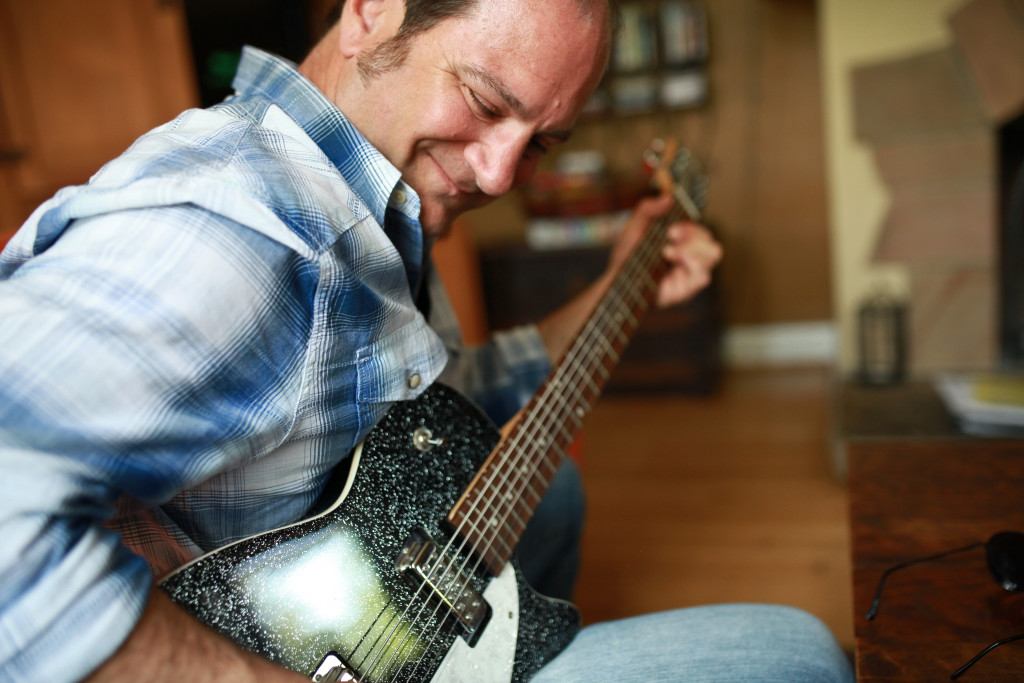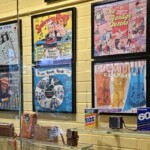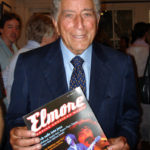Tomorrow, September 16th, with the long awaited release of his new album, Right Hand Road, singer/songwriter Brian Langlinais returns home, traveling the musical pathways that led him back to his Louisiana roots.
Langlinais was born into a musical pedigree- his father the saxophone player for Swamp Pop legends the Shondells- and as a young man he cut his teeth along the American highway as a roadhouse musician, playing a hot and heavy gumbo of blues, country, rock, zydeco and jazz—anything to get the crowd up and dancing. But after college, ambitions and the hand of fate called him away, first to Nashville, where he recorded two acclaimed Americana records, Rock & Fire and Tonight I Might, and eventually to Washington DC, a move sparked by a sudden romance.
But his hometown of Lafeyette, Louisiana kept calling his name, and when his friend, producer/guitarist D.L. Duncan, asked him to visit for a day to cut some tracks with Grammy-winning engineer Tony Daigle (Derek Trucks, James McMurtry, Jon Cleary), he couldn’t say no. What started as a day in the studio with some friends- experimenting and having fun with no end goal in sight- turned into Right Hand Road, an homage to Langlinais’ roadhouse roots, a mix of off-the-cuff originals and inspired covers, including William Bell’s “Every Day Is a Holiday” and Wilson Pickett’s “Green Grass.”
Incredible players round out the sound, from drummer Lynn Williams (Delbert McClinton, Marcia Ball), to Steve Conn (Sonny Landreth, Keith Urban) on keys, to guitarist James Pennebaker (Delbert McClinton, Lee Roy Parnell). With Langlinais at the helm, they set to record the groovy, gritty long-time-coming love letter to Louisiana.
Today, Elmore is exclusively streaming Right Hand Road in advance of its release. Pre-order yourself a copy at Amazon, and follow below the stream to read our Q&A with Langlais, who told us all about gut feelings, Cajun pride and “moving butts.”
Elmore Magazine: You’re known for your interpretations of songs—how do you decide which tunes will make great covers?
Brian Langlinais: What a GREAT question, and one I’m always asking myself. Sometimes a lyric moves me or covers a subject that I’m interested in exploring. Sometimes it’s a melody that I can’t get past or fits my voice or the band perfectly. But really…the more I think about it… I think it mostly comes down to a gut feeling. The hard part is finding songs that I can put myself in and not simply play the part or character the writer has created.
EM: How does covering a song differ from your experience writing originals?
BL: Oh… no doubt singing someone else’s song is MUCH easier. For me, writing is beyond hard. It plays on my biggest insecurities. There are so many terrific songs being written here (Nashville), every day, just begging to be sung; it’s easy for me to be lazy and not do the work. But writing for this CD was different. Because of the way the timing worked for the Right Hand Road sessions, we had to come up with songs quickly. And I think in a weird way that took a lot of the pressure off. At least it did for me. D.L. [Duncan] is a great writer, and of course had lyrics or outlines of lyrics with him. So instead of banging out the song until it was perfect, which is the usual process, we would talk about a groove that we wanted to try, he would pull something out of his notebook, and we would just roll from there. He would rewrite the lyrics as I was working on a melody while we were tracking. It was very spontaneous and freeing. And I take it as a tremendous gift from D.L. to be gracious enough to allow me to the freedom to create the melodies that work for me on his lyrics. The whole experience changed the way I look at songwriting and recording.
EM: You’ve mentioned that you weren’t even intending to make an album when you first went into the studio with D.L. Duncan… when did you realize that you had something really special?
BL: From the beginning, I think we all had a pretty good idea that this was going to be a lot of fun. Getting Ron and Brian together? There just was no way it wasn’t going to groove. And it did from the first downbeat on load in the night. As a matter of fact, we tracked “It’s the Whiskey That Eases The Pain” while Tony [Diagle] was still getting setup. But to answer your question, I think it was probably the next morning after we tracked “Don’t Let the Green Grass Fool You” that we all knew some thing special was happening. After that, things just started falling into place. See, initially we were only going to be there for one day. D.L. had been recording with Tony Daigle at Electric Comoland, and they were scheduled to mix his record that week. He knew I wanted to go home to Lafayette to record, so he suggested that we take one of his mixing days and go down to see how it felt at Tony’s and being home. Sometime after lunch that day we got word that an ice storm was hitting Nashville and that it would be best for us not to travel back for a day or two. Since it was going so, good D.L. and Tony offered to give up a couple more days so we could keep working. And that’s when the fun really started. The catch was, we had only planned on recording three or four songs, and we got through those before dinner on the first night. So we just started throwing out covers/grooves/ideas and rolled from there. We tracked ten (including four of the originals that we wrote in the studio) plus a scratch of what became “One Desire” in three days.
EM: This album really digs into your roots—musically and otherwise. Can you talk about that a bit? How is this album a love letter to Louisiana? How is this a change from your past recordings?
BL: Whew… one my favorite subjects to talk about. How much time do you have? LOL… I met my wife at a Cajun Dance in Washington DC when I was touring with the Cajun band File´. I moved to D.C. to marry her, and have lived away from Louisiana since 1990. Anyone that knows me knows that I am fiercely proud of being Cajun, of my hometown Lafayette and of the culture that I come from. So much of who I am and who my family is… is built on and from that culture. But the path I’ve been on, musically, has taken me in a different direction and at times far away from the music I grew up with. In some ways, I think I kind of lost sight of how sweet and special Lafayette is, and how lucky I am to be from there. But more to the point, how important the music and the musicians of South Louisiana are to me and who I am as an artist. Right Hand Road is the beginning of my journey back to that music.
On this CD, we intentionally worked with musicians that were either from Louisiana or had worked a lot in Louisiana. I wanted to have a common reference point with everyone on the record. That and that they all are such sweet, easy people to be around, made for an extremely safe and comfortable creative environment. Which became really important considering the circumstances that played out on the sessions. Also, D.L. and I spent a considerable amount of time talking about selecting/writing songs that not only represented South Louisiana, but were also great songs for me to sing. Finally, I wanted to be sure that whatever we did was genuine. Real. That it could stand up to all the other amazing music coming out of Lafayette.
EM: The record includes upbeat tracks such as “You Can’t Say I Didn’t Love You,” and mellower, stripped down tracks like “One Desire” and “Our Love is Slipping Away.” How do you find a balance of elements in a recording, and how do you translate that balance to a live show? After all, you came up in a scene that was meant to get people dancing…
BL: Yeah, that’s hard, but it’s also a lot of fun. Everybody I know has a different method. To me, again, sometimes it just comes down to a gut feeling. On a CD I try to put the songs in an order that has peaks and valleys. I want to hit them hard up front to keep them listening thru the first three or four songs, but I don’t want to give too much away because I want the listener to stay with me until the end. And it’s always a HUGE give and take. For example… usually, a song like “One Desire” would have gone later in the order, but I’m so in love with it I didn’t want to bury it behind … say… “Tucumcari.” And on any other record, “Whiskey” probably would not be next to “Our Love is Slipping Away.” But with this collection, that’s just how it worked best.
I do live sets much the same with peaks and valleys, but there I have the luxury of a) pulling for a bigger list of songs and b) gearing it to the venue we’re playing. Sometimes it’s about moving spirits and sometimes it’s about moving butts.
EM: What’s next for you? Do you already have new material bouncing around in your head, or will you just focus on hitting the road?
BL: Ha Ha… Both. I’ve been off the road for a little while, so it’s time to get back to work. We’ll be hitting the road some this fall and winter then real hard in the spring and summer. And there’s a European tour shaping up for 2017. As for writing, I’m always collecting ideas and melodies for songs.








Be the first to comment!